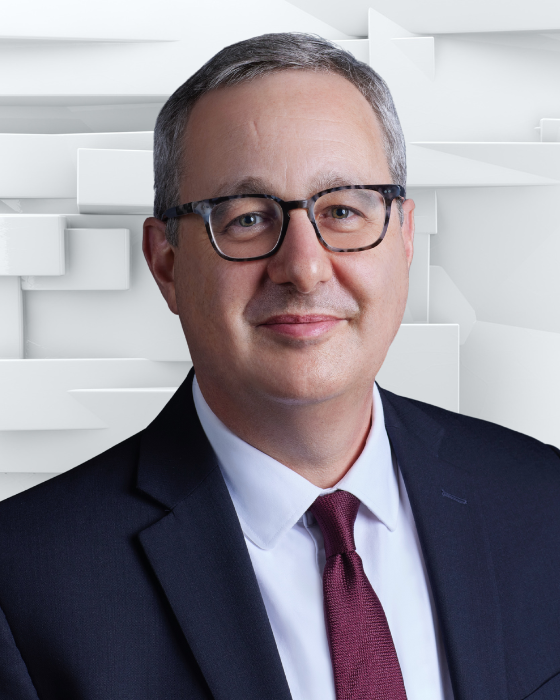Video
T2T Approach for Inflammatory Bowel Disease
Author(s):
Transcript: Miguel Regueiro, MD: Bill, you heard David do a nice job of talking about induction, maintenance, goals, and how we approach it. You've done a lot of work around tight control and this concept of treat-to-target [T2T], which I know David's been involved with, and Marla and Jessica as well. Then, there's the STRIDE [Selecting Therapeutic Targets in Inflammatory Bowel Disease] committee that got together around treat-to-target. The step-up, top-down seems to be old school. How do we approach it in terms of treat-to-target? How do you look at that? What does that mean for you?
William J. Sandborn, MD: Well, there are 2 domains we have to think about here. One is what is the target, or targets? Then, 2 is how you apply it in an iterative fashion, achieving those targets. When the STRIDE group that was led by the International Organization for the Study of Inflammatory Bowel Disease met some years ago, there was a lot of discussion, and eventually we concluded that, for Crohn disease, the target was symptomatic remission defined by abdominal pain and stool frequency, and endoscopic remission, defined by ileocolonoscopy. At that time, the available information for biomarkers was such that the group thought that should be adjunctive information and not necessarily a stand-alone target. Then, for ulcerative colitis, rectal bleeding, stool frequency, and endoscopic findings, either flexible sigmoidoscopy or colonoscopy. Again, the biomarkers would be adjunctive. For each of those, the histology would also be adjunctive.
The group is meeting again currently, and there will eventually be a STRIDE II, but what we have had in the meantime have been a lot more clinical trials and drugs approved where there's fecal calprotectin data for ulcerative colitis. There was the CALM trial in Crohn disease for which patients were assigned to treating to normalization of calprotectin and elevated CRP [C-reactive protein], and then looking at late endoscopic remission, and you got a lot more endoscopic remission if you made interim adjustments to biomarkers. If you're still treating only to symptoms, that's old school, and you should probably have to consider changing. Many of us are practicing with endoscopy, so it's symptomatic remission over a couple of months and endoscopic remission over 4 to 6 or 8 months. Then the next frontier is not just symptomatic remission, but biomarker improvement in the shorter term, again aiming for endoscopic healing.
Then, what about histologic healing? There is more and more information coming out in ulcerative colitis that you do even better if you get the histologic healing. It's going to be biomarkers on the way to endoscopy and histology with a late assessment, although maybe that will change too. It's a long time to wait, for 6 months, to have a sense of what's going on, and biomarkers could be helpful in the meantime.
In Crohn disease, there's a new assay, the Endoscopic Healing Index, which is getting some evolving experience. That's also interesting. There are a number of blood and stool biomarkers that are going to play a game. Then, I predict for ulcerative colitis we will be evolving to include histology in the ultimate outcome. I know David's thought a lot about that as well.
Miguel Regueiro, MD: Using more of this tight control that's not symptom based, but objective biomarkers: things that we can follow more easily, but then ultimately histology. We're evolving into an interesting new world.
David T. Rubin, MD: The other interesting thing from COVID-19 [coronavirus disease 2019] is telemedicine. It was always hard to get patients back, and the barrier to having a quick clinic visit by telemedicine is pretty low. You always had in your mind, “Gosh, that patient's kind of sick. I'm putting them on prednisone. I'd love to see them in a couple weeks. But I'm going to have a hard time fitting them in the office, and they're not going to come back for another visit, to wade through the gauntlet of waiting in the office and everything.” Well now, a quick 10- to 15-minute telemedicine visit is feasible a few weeks out. That’s a whole other aspect of tight control: just laying eyes on the patient virtually early on is cool.
Miguel Regueiro, MD: It's certainly opened up a new dynamic in terms of the focused monitoring, and I agree completely. In the visits we do now, patients are telling you very quickly what they need. The monitoring aspect doesn't have to be coming into the office. As we come out of this, which is still a ways away, we're probably entering into a whole new world.
Transcript Edited for Clarity




